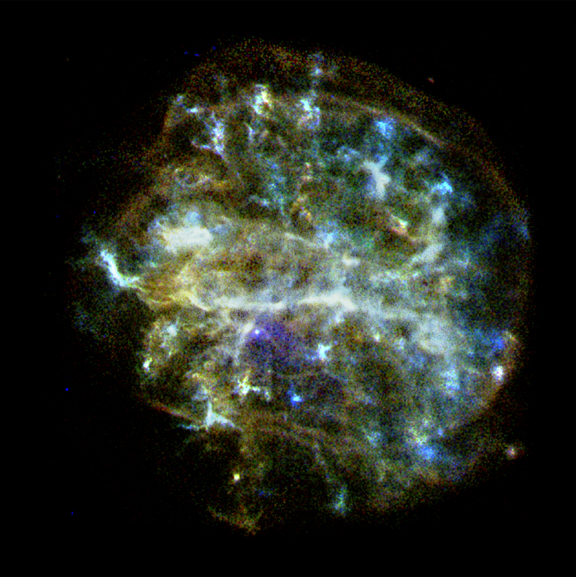
 Credit: NASA/CXC/Rutgers/J. Hughes et al.
Credit: NASA/CXC/Rutgers/J. Hughes et al.
Stellar Post-Mortem
Very massive stars (stars about 10 times as massive as the sun) end their
lives by exploding as supernovae. But because supernovae are relatively
rare (the last one in the Milky Way was more than 400 years ago),
astronomers are usually unable to definitively associate a particular
massive star with a particular supernova. In fact, theres only one
supernova for which a precursor star has been identified (SN 1987a), and in
that case the precursor star was not what astronomers expected. Now the Chandra X-ray Telescope has allowed
astronomers to perform a "post-mortem" on a supernova remnant called G292.0+1.8
to help identify the precursor star. The image above shows X-ray emission
from this supernova remnant, the remains of a star which exploded about
1600 years ago. The bluish material in the picture is produced by oxygen
rich material, while the whitish and yellowish emission is not heavily
enriched. Since the types of elements cooked up inside a massive star
depends on the star's mass, astronomers can use the distribution of
chemical elements in the supernova remnant to help identify the precursor
star.
Last Week *
HEA Dictionary * Archive
* Search HEAPOW
* Education
Each week the HEASARC
brings you new, exciting and beautiful images from X-ray and Gamma ray
astronomy. Check back each week and be sure to check out the HEAPOW archive!
Page Author: Dr. Michael F.
Corcoran
Last modified November 5, 2001


